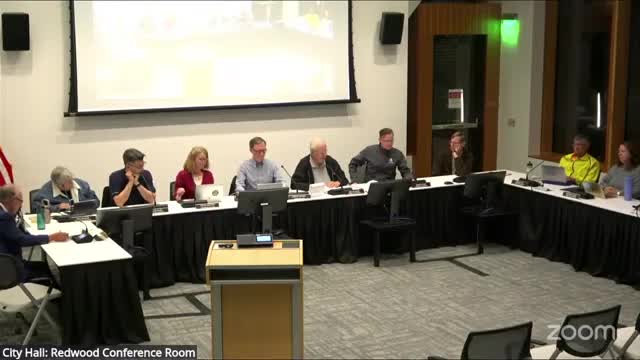Committee backs drafting charter language to allow alternative public‑works procurement methods such as design‑build
October 24, 2025 | Sunnyvale , Santa Clara County, California
This article was created by AI summarizing key points discussed. AI makes mistakes, so for full details and context, please refer to the video of the full meeting. Please report any errors so we can fix them. Report an error »

The Charter Review Committee heard Subcommittee 3’s draft on alternative procurement delivery methods on Oct. 23 and directed the subcommittee to prepare redlined charter language for the committee’s next report cycle.
Vice Chair Wickham, presenting the subcommittee’s findings, said the draft focused on design‑build delivery and other alternatives that are now permitted by California law and used by other cities for large public works projects. Wickham said several cities require or authorize design‑build for projects above particular thresholds and recommended a charter change that would allow the city council to authorize any alternative delivery method allowed by state law.
Members discussed whether the committee should provide a general authorization ("authorize any methods allowed by state law") or specify particular models (design‑build) and thresholds. Member Pine and Member Vickery urged providing draft redline language for the charter to avoid confusion; staff pointed the committee to model language used in other cities, including Pasadena, and offered city attorney support for drafting.
Public comment recommended plain‑language descriptions and warned against marketing‑style words. Steve S. told the committee to “retire the word modernize” from ballot or explanatory language and urged short, clear wording for voters. Another public commenter suggested creating a 75‑word explanatory description for voters if the committee elects to place a change on the ballot.
The committee conducted a straw poll and unanimously instructed the procurement subcommittee to draft specific charter amendment language to authorize alternative delivery methods, and members asked staff to circulate Pasadena’s example language and to be prepared to review a draft at the Nov. 6/Nov. 19 schedule.
The subcommittee’s recommended approach — allowing alternative procurement methods permitted by state law — is intended to give the city more flexibility on delivery models for capital projects while letting council retain public oversight when selecting methods and thresholds.
Vice Chair Wickham, presenting the subcommittee’s findings, said the draft focused on design‑build delivery and other alternatives that are now permitted by California law and used by other cities for large public works projects. Wickham said several cities require or authorize design‑build for projects above particular thresholds and recommended a charter change that would allow the city council to authorize any alternative delivery method allowed by state law.
Members discussed whether the committee should provide a general authorization ("authorize any methods allowed by state law") or specify particular models (design‑build) and thresholds. Member Pine and Member Vickery urged providing draft redline language for the charter to avoid confusion; staff pointed the committee to model language used in other cities, including Pasadena, and offered city attorney support for drafting.
Public comment recommended plain‑language descriptions and warned against marketing‑style words. Steve S. told the committee to “retire the word modernize” from ballot or explanatory language and urged short, clear wording for voters. Another public commenter suggested creating a 75‑word explanatory description for voters if the committee elects to place a change on the ballot.
The committee conducted a straw poll and unanimously instructed the procurement subcommittee to draft specific charter amendment language to authorize alternative delivery methods, and members asked staff to circulate Pasadena’s example language and to be prepared to review a draft at the Nov. 6/Nov. 19 schedule.
The subcommittee’s recommended approach — allowing alternative procurement methods permitted by state law — is intended to give the city more flexibility on delivery models for capital projects while letting council retain public oversight when selecting methods and thresholds.
View the Full Meeting & All Its Details
This article offers just a summary. Unlock complete video, transcripts, and insights as a Founder Member.
✓
Watch full, unedited meeting videos
✓
Search every word spoken in unlimited transcripts
✓
AI summaries & real-time alerts (all government levels)
✓
Permanent access to expanding government content
30-day money-back guarantee

